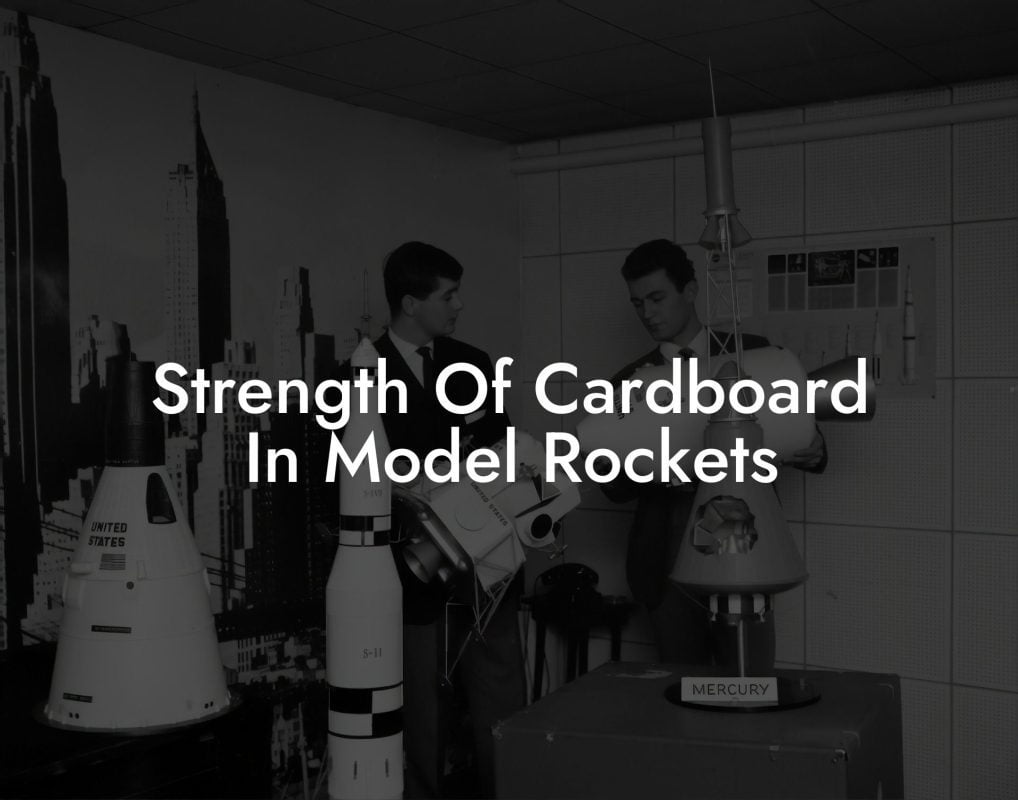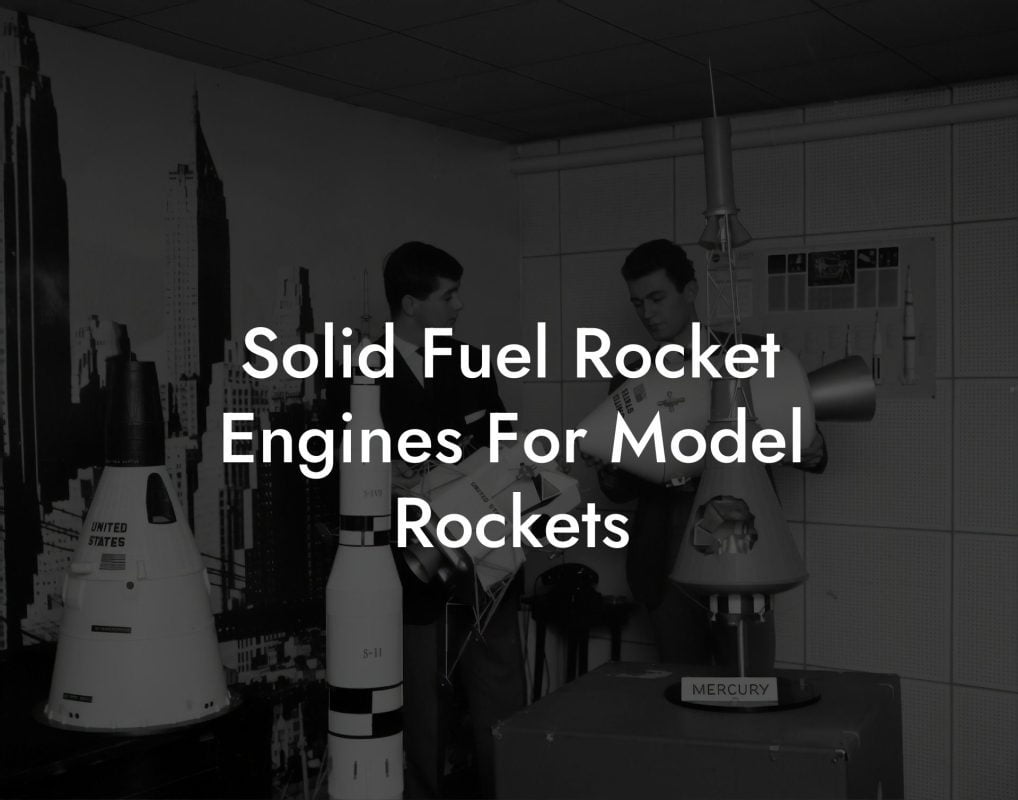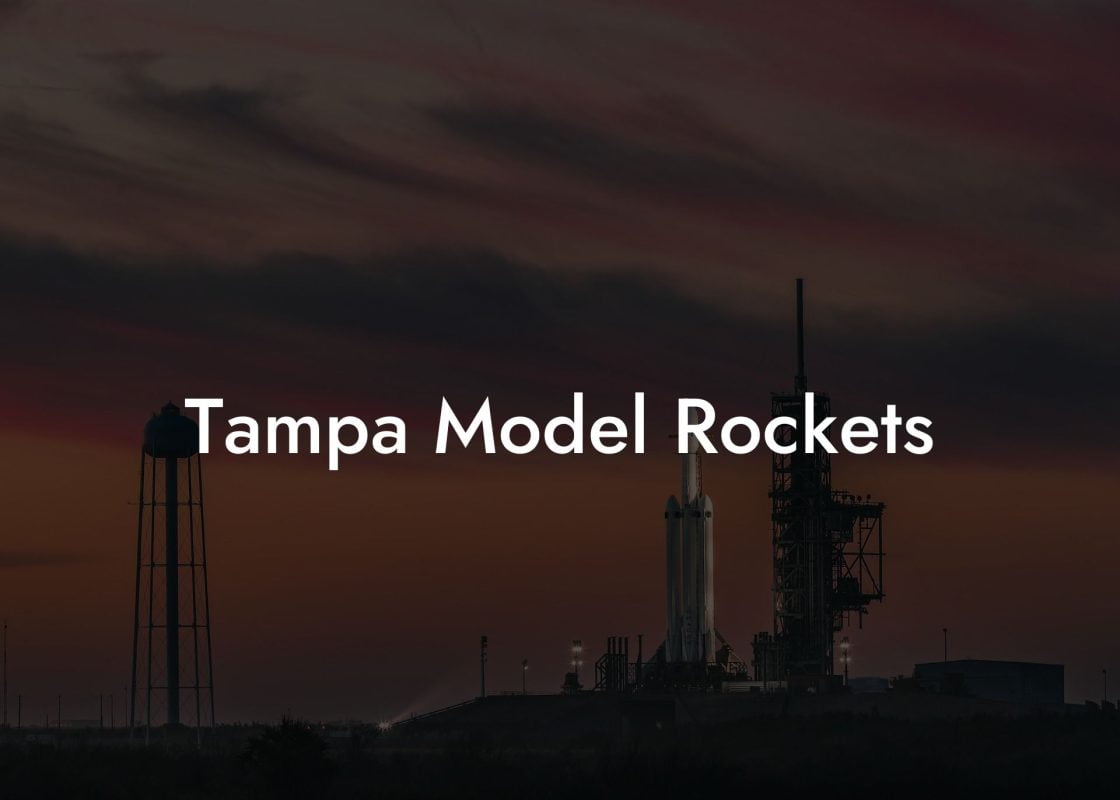Imagine soaring through the skies, leaving a trail of excitement and curiosity in your wake. Welcome to the world of model rockets, where the thrill of launch and the rush of discovery come together in a mesmerizing display of science and art. But have you ever wondered, do model rockets use solid fuel? Let's blast off on a journey to explore the fascinating world of model rocket propulsion and uncover the secrets behind these miniature marvels.
Quick Links to Useful Sections
What Are Model Rockets?
Model rockets are scaled-down versions of real rockets, designed to educate, entertain, and inspire. They typically range from a few inches to several feet in height and are powered by a variety of propulsion systems. While they may not reach the same dizzying heights as their full-scale counterparts, model rockets still offer an exhilarating experience for enthusiasts of all ages.
From simple, entry-level kits to complex, custom-built designs, model rockets cater to a wide range of interests and skill levels. Whether you're a seasoned hobbyist or just starting out, the world of model rocketry has something to offer everyone.
The Basics of Rocket Propulsion
Before we dive into the specifics of model rocket propulsion, let's cover the fundamental principles of rocket science. A rocket works by expelling hot gases out of its back end, generating a reaction force that propels it forward. This process is governed by Newton's third law of motion, which states that every action has an equal and opposite reaction.
The key to a successful rocket launch lies in the efficient combustion of fuel and the controlled release of energy. In a traditional chemical rocket, this is achieved through the reaction between fuel and oxidizer, which produces a high-pressure gas that is then expelled through a nozzle to generate thrust.
Looking For The Best Model Rocket Kits? You'll Love These:
Solid Fuel vs. Liquid Fuel: What's the Difference?
When it comes to rocket propulsion, there are two primary types of fuel: solid and liquid. Solid fuels, also known as composite propellants, consist of a mixture of fuel and oxidizer cast into a solid cylinder. This design provides a simple, reliable, and relatively low-cost option for model rockets.
Liquid fuels, on the other hand, involve the separate storage and injection of fuel and oxidizer into a combustion chamber. This approach offers greater control over the combustion process, allowing for more efficient and powerful engines. However, it also requires more complex plumbing and electronics, making it less suitable for model rockets.
Do Model Rockets Use Solid Fuel?
Yes, most model rockets use solid fuel. The simplicity and reliability of solid fuel motors make them an ideal choice for hobbyists and enthusiasts. Solid fuel motors are also more forgiving, allowing for a wider range of operating conditions and reducing the risk of catastrophic failure.
Solid fuel motors typically consist of a fuel grain, an oxidizer, and a bonding agent. The fuel grain is usually made from a mixture of sugar, starch, or other combustible materials, while the oxidizer is typically ammonium perchlorate or potassium nitrate. The bonding agent helps to hold the fuel and oxidizer together, ensuring a consistent and predictable burn.
Types of Solid Fuel Motors
Within the realm of solid fuel motors, there are several types and subtypes, each with its own characteristics and applications. Some common types of solid fuel motors include:
- Black powder motors: These motors use a mixture of charcoal, sulfur, and potassium nitrate as the fuel and oxidizer. They are relatively low-power and often used in smaller model rockets.
- Composite motors: These motors use a mixture of ammonium perchlorate and a fuel, such as HTPB (hydroxyl-terminated polybutadiene) or polyurethane. They offer higher performance and are commonly used in larger model rockets.
- Hybrid motors: These motors use a solid fuel, such as HTPB or polyurethane, in combination with a liquid oxidizer, such as nitrous oxide or liquid oxygen. They offer a compromise between the simplicity of solid fuel motors and the performance of liquid fuel motors.
Advantages and Limitations of Solid Fuel Motors
Solid fuel motors offer several advantages, including simplicity, reliability, and low cost. They are also relatively easy to manufacture and maintain, making them a popular choice for model rockets.
However, solid fuel motors also have some limitations. They tend to be less efficient than liquid fuel motors, resulting in lower specific impulses and shorter burn times. They also produce a significant amount of smoke and debris, which can be a concern for environmental and safety reasons.
Conclusion
In conclusion, model rockets do use solid fuel, and for good reason. The simplicity, reliability, and low cost of solid fuel motors make them an ideal choice for hobbyists and enthusiasts. While they may not offer the same level of performance as liquid fuel motors, solid fuel motors provide a unique and exciting experience for those who enjoy the thrill of model rocketry.
Whether you're just starting out or have been flying model rockets for years, understanding the basics of solid fuel propulsion can help you appreciate the art and science behind these miniature marvels.
Frequently Asked Questions
Here are some frequently asked questions about model rockets and solid fuel propulsion:
1. What is the most common type of solid fuel used in model rockets?
The most common type of solid fuel used in model rockets is a composite propellant, typically consisting of ammonium perchlorate and a fuel such as HTPB or polyurethane.
2. How do solid fuel motors compare to liquid fuel motors in terms of performance?
Solid fuel motors tend to be less efficient than liquid fuel motors, resulting in lower specific impulses and shorter burn times.
3. Are solid fuel motors safe to use?
Solid fuel motors are generally safe to use when handled and operated properly. However, they do produce hot gases and debris, which can be a concern for environmental and safety reasons.
4. Can I build my own solid fuel motor?
Yes, it is possible to build your own solid fuel motor, but it requires careful attention to detail and a thorough understanding of the materials and processes involved.
5. What is the future of solid fuel propulsion in model rockets?
Solid fuel propulsion is likely to remain a popular choice for model rockets, with ongoing research and development focused on improving efficiency, safety, and performance.
Resources and community Support: Your Next Steps
If you're interested in learning more about model rockets and solid fuel propulsion, there are many resources available to help you get started. From online forums and communities to local clubs and meetups, there's a wealth of information and support waiting for you.
Some popular resources include:
- National Association of Rocketry (NAR): A non-profit organization dedicated to promoting model rocketry and providing resources for enthusiasts.
- Model Rocketry Forum: An online community forum where enthusiasts can share knowledge, ask questions, and showcase their projects.
- Local model rocket clubs: Many cities and towns have local model rocket clubs that meet regularly to share knowledge, launch rockets, and socialize.
Whether you're just starting out or have been flying model rockets for years, there's always something new to learn and discover. So why not take the next step and explore the world of model rocketry today?
Looking For The Best Model Rocket Kits? You'll Love These:
Useful Interruption: Dive deeper into the world of Model Rockets with our most popular sections. If there is anything you think is missing or anything you would love for us to write about, just give us a shout.
- Getting Started & Basics With Model Rockets
- Model Rocket Design, Build & Customization
- Model Rocket Propulsion & Engine Technology
- Model Rocket Launch Techniques & Recovery
- Model Rocket Advanced Rocketry & Innovations
- Model Rocket DIY and Customization
- Model Rocket Equipment Reviews & Digital Tools
- Community, Competitions & Education
- Model Rocket Troubleshooting & FAQs
- Model Rocket Bonus/Seasonal & Niche Topics
A group of model rocket enthusiasts gathered at a field for their weekly launch event. Among them was Dave, a seasoned builder known for pushing the limits of hobby rocketry. This time, he had outdone himself.
“Ladies and gentlemen,” Dave announced, dramatically pulling a cloth off his latest creation, “I present to you: The Kraken!”
The crowd gasped. This wasn’t just a model rocket—it was a monster. The thing stood 8 feet tall, had six clustered engines, and was covered in enough duct tape to qualify as a classified aerospace project.
“Dave,” muttered Steve, the cautious safety officer, “Have you, uh… done the math on this?”
“Math?” Dave scoffed. “I built it in my garage at 3 a.m. with parts from eBay. This is an art piece, Steve.”
The countdown began.
5…
4…
3…
2…
1…
The engines ignited with a BOOM, and The Kraken shot up… kind of. It immediately did a violent barrel roll, narrowly missing the spectators before skyrocketing at an angle that could only be described as “legally questionable.”
The crowd collectively ducked as The Kraken flew straight over the adjacent cornfield, where Old Man Jenkins, the grumpiest farmer in town, was minding his business.
KABOOM!
The rocket disappeared behind the barn. A moment later, a flaming piece of Estes igniter wire landed at Steve’s feet. The silence was deafening.
And then—an unmistakable sound echoed across the field.
Jenkins’ shotgun being cocked.
“DAVE!!!” Steve shouted. “RUN.”
And that was the day Dave invented the first-ever biologically powered rocket booster: pure adrenaline.
To this day, nobody knows where The Kraken landed, but legend has it, it still haunts the skies, terrifying unsuspecting drones and low-flying birds.















